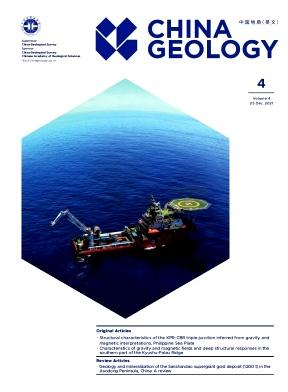Formation, evolution, reconstruction of black shales and their influence on shale oil and gas resource
IF 4.7
3区 地球科学
Q1 GEOSCIENCES, MULTIDISCIPLINARY
引用次数: 0
Abstract
Black shales are important products of material cycling and energy exchange among the lithosphere, atmosphere, hydrosphere, and biosphere. They are widely distributed throughout geological history and provide essential energy and mineral resources for the development of human society. They also record the evolution process of the earth and improve the understanding of the earth. This review focuses on the diagenesis and formation mechanisms of black shales sedimentation, composition, evolution, and reconstruction, which have had a significant impact on the formation and enrichment of shale oil and gas. In terms of sedimentary environment, black shales can be classified into three types: Marine, terrestrial, and marine-terrestrial transitional facies. The formation processes include mechanisms such as eolian input, hypopycnal flow, gravity-driven and offshore bottom currents. From a geological perspective, the formation of black shales is often closely related to global or regional major geological events. The enrichment of organic matter is generally the result of the interaction and coupling of several factors such as primary productivity, water redox condition, and sedimentation rate. In terms of evolution, black shales have undergone diagenetic evolution of inorganic minerals, thermal evolution of organic matter and hydrocarbon generation, interactions between organic matter and inorganic minerals, and pore evolution. In terms of reconstruction, the effects of fold deformation, uplift and erosion, and fracturing have changed the stress state of black shale reservoirs, thereby having a significant impact on the pore structure. Fluid activity promotes the formation of veins, and have changed the material composition, stress structure, and reservoir properties of black shales. Regarding resource effects, the deposition of black shales is fundamental for shale oil and gas resources, the evolution of black shales promotes the shale oil and gas formation and storage, and the reconstruction of black shales would have caused the heterogeneous distribution of oil and gas in shales. Exploring the formation mechanisms and interactions of black shales at different scales is a key to in-depth research on shale formation and evolution, as well as the key to revealing the mechanism controlling shale oil and gas accumulation. The present records can reveal how these processes worked in geological history, and improve our understanding of the coupling mechanisms among regional geological events, black shales evolution, and shale oil and gas formation and enrichment.
黑页岩的形成、演化、重构及其对页岩油气资源的影响
黑页岩是岩石圈、大气圈、水圈和生物圈之间物质循环和能量交换的重要产物。它们在地质历史上分布广泛,为人类社会的发展提供了不可或缺的能源和矿产资源。它们还记录了地球的演化过程,增进了人们对地球的认识。本综述主要介绍黑页岩沉积成因和形成机制、组成、演化和重构,对页岩油气的形成和富集具有重要影响。从沉积环境来看,黑页岩可分为三种类型:海相、陆相和海陆过渡相。形成过程包括风化输入、下旋流、重力驱动和近海底流等机制。从地质学角度来看,黑页岩的形成往往与全球或区域性重大地质事件密切相关。有机质的富集一般是初级生产力、水体氧化还原条件和沉积速率等多种因素相互作用和耦合的结果。在演化方面,黑页岩经历了无机矿物的成岩演化、有机物的热演化和碳氢化合物的生成、有机物与无机矿物之间的相互作用以及孔隙演化。在重建方面,褶皱变形、隆起和侵蚀以及断裂的影响改变了黑页岩储层的应力状态,从而对孔隙结构产生了重大影响。流体活动促进了岩脉的形成,改变了黑页岩的物质组成、应力结构和储层性质。在资源效应方面,黑页岩的沉积是页岩油气资源的基础,黑页岩的演化促进了页岩油气的形成和储存,黑页岩的重构会造成油气在页岩中的异质分布。探索不同尺度黑色页岩的形成机制和相互作用是深入研究页岩形成和演化的关键,也是揭示页岩油气聚集控制机制的关键。目前的记录可以揭示这些过程在地质历史中的作用,提高我们对区域地质事件、黑页岩演化和页岩油气形成与富集之间耦合机制的认识。
本文章由计算机程序翻译,如有差异,请以英文原文为准。
求助全文
约1分钟内获得全文
求助全文

 求助内容:
求助内容: 应助结果提醒方式:
应助结果提醒方式:


